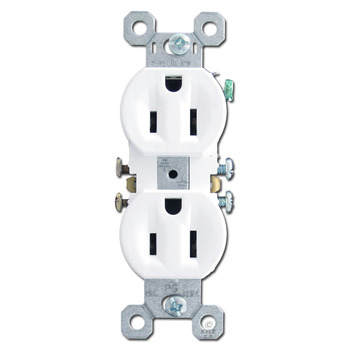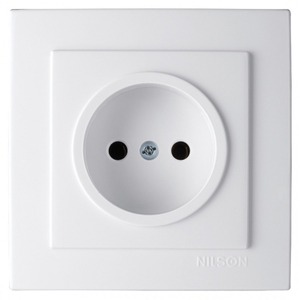International Travel Essentials for Tech Folks, Part 1
Intro
I recently built a 3 week long trip to Spain and Portugal around DevOps Barcelona and thought I would share my experiences traveling with tech related gear. It can be a bit daunting traveling internationally, especially given all the work involved with moving around between multiple locations.
In this article, I’ll go over some of the important electronics I think you should consider. Since everyone will likely have a cell phone, I want to start with getting a cheap and fast data plan.
eSIM
I think the most common question people generally have is how will their mobile phone coverage work in a foreign country. For most US cellular providers, it will fall into two main categories with the key distinction being data.
- Your provider will give you “unlimited” data, but throttle it to a slow speed (~256Kbps)
- You provider will give you “unlimited” data, but charge roaming data fees
In both cases, you will likely get free SMS, and have calls at ~$0.20/min. Having your speed throttled may not seem like a big deal, but it is noticeably slower when even grabbing an Uber.
The standard solution is to purchase an electronic SIM (eSIM) from a 3rd party that has coverage in your destination area. It will generally be much cheaper than paying roaming fees, and more cost effective than purchasing a temporary international package through your provider.
There are several reputable eSIM providers, you can search reddit for recommendations. I personally used MobiMatters with great success.
Steps eSIM
Purchasing the eSIM is simple. You pick your destination, length of time eSIM will be used, and the data transfer limit.
Since I was traveling between two EU countries, I picked a “Europe” eSIM. 30 days validity, and 15GB of data. Note, these particular SIMs do not come with a phone number, more on that later.
You will receive a QR code, along with the hardcoded IMEI and other network information included in the QR Code.
Setting up the eSIM
- Samsung Galaxy Z Flip6
Fun fact, the Sparks eSIM works in the USA, so you can ensure it works before even traveling to Europe.
Mobimatters does not require any special application. As with all eSIMs, your phone just needs to support eSIMs, which should be the case for all modern cell phones. The steps for activating and using the eSIM depends on your specific phone make and model.
The steps outlined here will refer to Android phones version 14+, more specifically the Samsung Flip6.
No app required, go to Settings » SIM Manager. You should see a plus (+) sign to add an eSIM. You can simply scan the QR Code you received from your purchase.
The eSIM should be added in an inactive state.
Activating eSIM
This step varies by your specific Android device. For my Samsung Flip6, you have a primary SIM, and alternate SIMs. Each time you make a call, or send a SMS/MMS in the Phone app it defaults to primary SIM, but you can select an alternative SIM. This option appears for every message and call, and can be changed back and forth.
The key here is that data will go through the Primary SIM. So for us, you want to set your eSIM as the primary SIM. This way, the eSIM will always be used for cellular data.
So how will you receive phone calls and SMS/MMS if our primary SIM is set to an eSIM which does not have a phone number?
The neat feature in Android phones is you can have dual Active/Active SIMs. So even though our eSIM does not have a phone number, your regular SIM (set as non-primary) will still receive calls and SMS/MMS as normal. You will actually see two cell signals at the top right of the screen, since the SIMs may be on different networks at the same time.
Important note, you will want to enable roaming on the eSIM to connect to the best network. No worries, there are no roaming charges with the eSIM.
Also note, I set roaming on my regular physical SIM for the same reason, even though it’s not used for data.
Motorola Razr
My wife has a Motorola Razr 2024, and the eSIM instructions are a bit different. You scan as normal, but you actually do not configure a primary or alternate SIM.
In the SIM manager, you explicitly set which SIM you want to use for Data, calls, and SMS/MMS for the entire phone. In my opinion this is a much more straightforward configuration setup.
Travel Router
- GL.iNet GL-A1300 Pocket VPN Travel Router. link
We had several phones, laptops, and tablets we wanted to use on Hotel wifi. So I thought it would be a good idea to purchase a router to help centralize management of wifi (and hardwired) internet connections in hotels.
Added benefit is this router is packed with features, such as the ability to configure OpenVPN and Wireguard VPN, along with built-in support for several 3rd party VPN providers.
The traditional wisdom is to always use a VPN when using hotel wifi, even if you did not require access to a private network. This was true years ago, but these days every serious website uses TLS encryption (HTTPS everywhere), so the risk of MITM and other snooping attacks is extremely low.
If you don’t intend on using a VPN (I didn’t for this trip) and want added security, you can avoid using hotel’s DNS by using the built-in AdGuard DNS
This little router has AdGuard and AdGuard DNS built-in. If you’re familiar with Pi-Hole, it has similar functionality. You get to block harmful and annoying tracking and ad serving endpoints while also avoiding going through unknown DNS servers.
Setting up
I didn’t do any configuring of the router until I got to my first hotel. The setup instructions are pretty typical of any other router. For my model I connected my laptop via ethernet to one of the LAN ports and hit https://192.168.8.1/ to do the initial configuration to set an admin password.
Note: this runs a self-signed TLS certificate, so your browser is not going to trust it by default and complain about it not being “secure”. But it is, in fact a secure TLS certificate
What’s different is configuring it to use the hotel’s WIFI so that it can act as a Repeater for your other devices. It’s still simple, in the admin console go to “Internet” and select the WIFI network to connect to.
When you connect, it will likely require a prompt to login via a browser. If so you will shortly see a web browser popup and/or link requiring you to login just as you normally would if connecting your phone or laptop directly to the wifi.
This login authentication will suffice so that all of your devices can connect to the router and use the internet.
If your hotel room has a hardwired ethernet port, you can simply connect it to the WAN port on the router and no authentication or configuration is required.
Some considerations
Most of the hotels worked fine, but a couple of them had strange wifi setups.
One hotel which has unencrypted/open WIFI, would immediately kick the router from the network. I did not have time to investigate the reason or fix for this, so I was not able to use the router in this hotel.
Another hotel would require a new signup/authentication every morning. Not too much of a hassle and I was able to still use the router fine. Just something to note.
Other accessories
Portable disk drive
- SanDisk Portable SSD. link
I always bring an encrypted Sandisk portable drive with me where I store Keepass vaults, ssh keys and other files.
Since I use Linux exclusively I use LUKS to encrypt the drive with an ext4 filesystem.
Instructions for LUKS
European Power adapters
US uses 120V for most electrical devices While the EU uses 220V for most electrical devices.


You will need to use some sort of adapter to plug your electronics into hotels, trains, cafes etc.
What I use:
-
TESSAN European Travel Adapter(US To EU) With USB Ports, to Most of Europe, Iceland Spain Italy France Germany. link
-
OREI American USA To European Plug Adapter – Type E/F Schuko Plug Adapter. link
Conclusion
I’ve covered the most important tech devices and configuration I use when I travel. In part two of this series, I will go over some of the apps I used to travel between different cities along with other tips I think are important.
